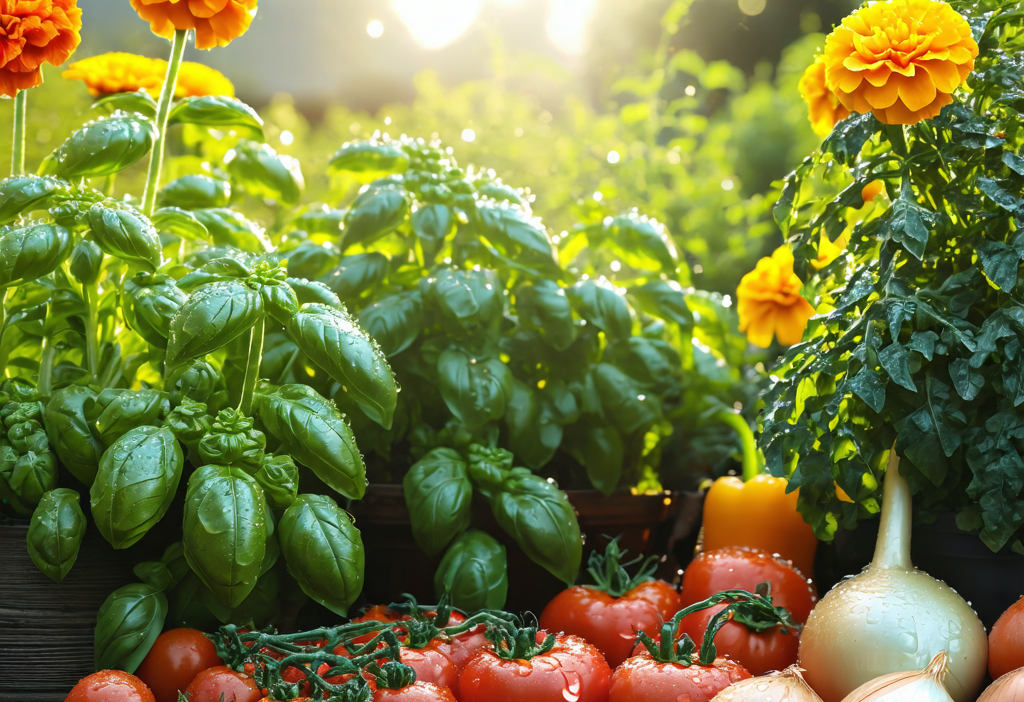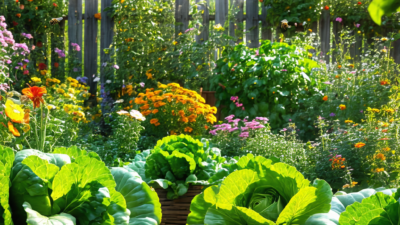The Art of Companion Planting: Boosting Your Garden’s Health Naturally
Gardening is more than just planting seeds and waiting for them to grow. It’s about creating a harmonious ecosystem where plants work together to thrive. One of the most fascinating ways to achieve this is through companion planting—a practice that has been around for centuries but remains as relevant today as ever. In this blog post, we’ll explore the ins and outs of companion planting, from its benefits to practical tips on how you can implement it in your garden.
What Is Companion Planting?
Companion planting is the art of pairing plants together in a way that benefits both species. This could mean one plant providing shade for another, certain plants repelling pests, or others attracting beneficial insects like bees and ladybugs. The idea is to create a balanced environment where each plant contributes something valuable to the ecosystem.
The Benefits of Companion Planting
There are numerous advantages to using companion planting in your garden:
- Natural Pest Control: Some plants emit chemicals that repel pests. For example, marigolds are known for deterring aphids and nematodes.
- Improved Pollination: Flowers like calendula attract bees, which in turn help pollinate your vegetables.
- Better Soil Health: Legumes such as beans and peas fix nitrogen in the soil, making it available for other plants.
- Space Optimization: Growing vertically or interplanting can maximize yields in small spaces.
Top Companion Planting Combinations
Some of the most effective plant pairings include:
- Tomatoes and Marigolds: The bright blooms of marigolds not only add color but also keep harmful insects away from your tomatoes.
- Basil and Peppers: Basil repels flies and mosquitoes while enhancing the flavor of peppers.
- Carrots and Onions: These root vegetables grow well together, with onions deterring carrot fly pests.
- Zucchini and nasturtiums: Nasturtiums attract aphids away from zucchini plants, protecting them naturally.
Tips for Starting Your Companion Planting Journey
If you’re new to companion planting, here are some tips to get started:
- Research which plants work well together. Resources like the Colorado State University Extension provide excellent guides.
- Start with a small garden bed or container so you can easily manage your experimentations.
- Observe how plants interact. Every garden is unique, and some combinations may work better for you than others.
- Don’t forget to rotate crops annually to maintain soil health and prevent pest buildup.
The Science Behind Companion Planting
While many of the benefits are well-documented, there’s still much to learn about how different plants interact. Scientists study everything from chemical emissions to root interactions in hopes of uncovering more effective pairings. For instance, researchers have found that certain plants release allelochemicals that can either help or hinder neighboring plants.
Understanding these mechanisms can help gardeners make informed decisions. For example, planting broccoli near cauliflower might not be ideal if they both attract the same pests. Instead, consider pairing brassicas with herbs like rosemary or thyme to deter cabbage moths naturally.
Common Mistakes to Avoid
While companion planting is a rewarding practice, there are some pitfalls to watch out for:
- Overcrowding: Just because plants can grow together doesn’t mean they should be too close. Ensure each has enough space to thrive.
- Misunderstanding Plant Needs: Some companion plants may require different soil pH levels or sunlight conditions, so do your homework first.
- Ignoring Pest Attractants: While some plants repel pests, others might attract them. Be mindful of this balance in your garden layout.
Creative Companion Planting Ideas
Don’t be afraid to think outside the traditional pairings. Here are a few creative ideas to try:
- Create a pollinator pathway by planting flowers like sunflowers, zinnias, and lavender along your vegetable rows.
- Use herbs like mint or chives as natural borders around your garden beds to deter pests while adding flavor to your meals.
- Experiment with companion planting in containers. Herbs like parsley, cilantro, and dill can be paired with cherry tomatoes for a mini ecosystem.
Conclusion
Companion planting is more than just a gardening trend; it’s a sustainable approach to creating thriving, productive gardens. By understanding how different plants interact and supporting each other, you can reduce reliance on chemical pesticides, improve soil health, and enjoy bountiful harvests year after year.
So why not give it a try? Whether you’re an experienced gardener or just starting out, there’s always something new to learn about the fascinating world of companion planting. Happy gardening!
For more information, check out resources like the Botanical Garden or your local extension office.





